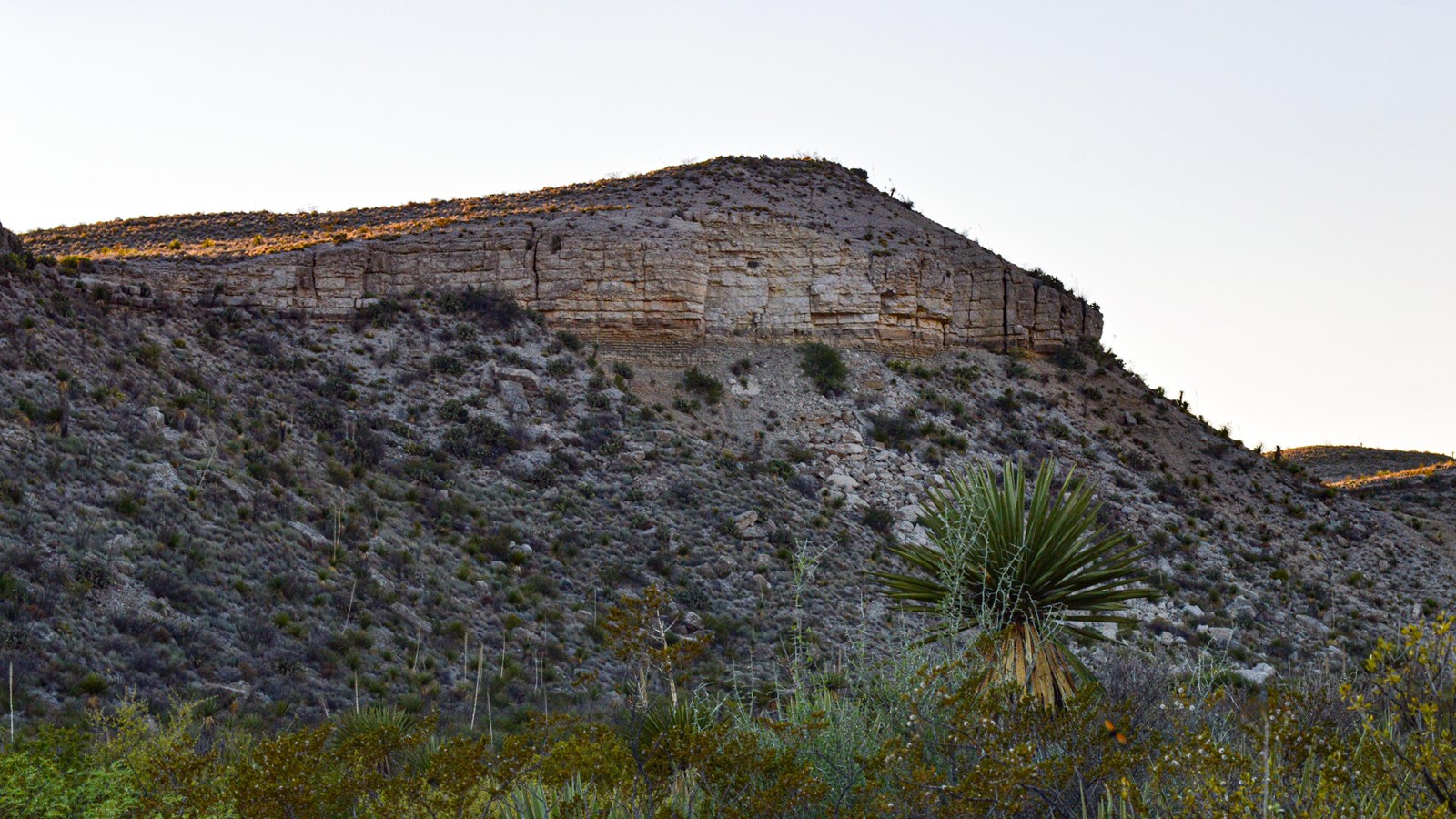Last updated: October 12, 2020
Place
Dagger Flat #15

NPS/C. Negele
Quick Facts
Location:
Dagger Flat Road
Amenities
1 listed
Scenic View/Photo Spot
High on the cliff in front of you, the contact between two rock formations can be seen. The hard, massive Buda Limestone forms the top of the cliff and rests on top of the softer layers of Del Rio Clay. These rock layers were laid down on the floor of an ancient sea during the Cretaceous Period about 95 million years ago.
The change in the character of these two rock formations represents a change in the ancient environment and likely indicates a deepening of the ancient sea. The Del Rio Clay would have been deposited in relatively shallow water near the shore, while the Buda Limestone was deposited in deeper water. This change was probably not sudden; rather, the contact represents a gap in the rock record, probably caused by erosion of the top of the Del Rio Clay before the limestone was deposited. Later, these rock layers were uplifted to form the mountains surrounding you by the same tectonic forces that created the Rocky Mountains.
The change in the character of these two rock formations represents a change in the ancient environment and likely indicates a deepening of the ancient sea. The Del Rio Clay would have been deposited in relatively shallow water near the shore, while the Buda Limestone was deposited in deeper water. This change was probably not sudden; rather, the contact represents a gap in the rock record, probably caused by erosion of the top of the Del Rio Clay before the limestone was deposited. Later, these rock layers were uplifted to form the mountains surrounding you by the same tectonic forces that created the Rocky Mountains.
